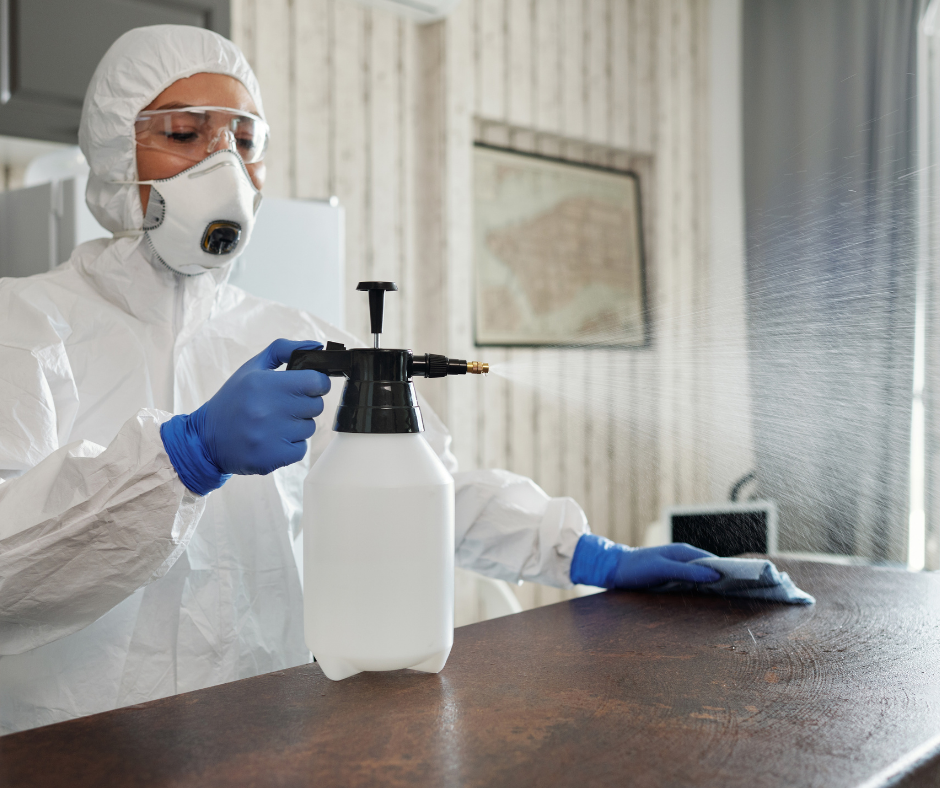In a world of heightened awareness around cleaning and disinfecting, a person can feel like they need a degree in organic chemistry just to figure out which is the right cleaner to buy. Rest assured, you are not alone. In this post, we are going to talk about anti-microbial cleaners, what they are, how they work, and their benefits.
What Does Anti-Microbial Mean?
Anti-microbial is the broad term for any product or ingredient, or mixture of substances, that kills or inhibits the growth of bacteria, viruses, or molds. Anti-microbial definitions can differ based on how they are produced, regulated, and their particular use and benefits.
Some examples of applications where anti-microbials are used include medicine, cleaning products, textiles, durable medical products, and food service equipment. In short, anti-microbials play a key role in preventing the spread of disease and can be found in everyday products like countertops, toys, surface coatings, textiles, and hospital equipment. (1)
How do Anti-Microbials Work?
Anti-microbials can either leave a surface coating or be integrated into a product’s framework. Anti-microbials work at a cellular level by attacking the cell wall causing micro-organisms to explode, while at the same time consuming, bacterial resources thereby preventing bacterial multiplication.(2)
When integrated into a product, anti-microbials prevent pathogens from adhering to surfers, thus stopping them from growing or becoming viable. Both of these methods continually disrupt and prevent the growth or multiplication of micro-organisms like bacteria, mold, and mildew by creating inhospitable environments.
What Are Microbes and Pathogens?
Microbes
Microbes are bacteria and viruses that are too small to see with the naked eye. They are found in the air, water, soil, and on every surface and in every environment imaginable. They include bacteria, protozoa, fungi, algae, amoebas, and slime molds.
Pathogens
Most microbes are harmless, and many are beneficial to both the environment and people. But the few that are harmful are called pathogens. Pathogens include different kinds of bacteria, fungus, viruses, and parasites that can cause disease.
How is Anti-Microbial Technology Different From Disinfectants?
Disinfectants were developed for use on non-living surfaces, such as countertops, inert objects, technology, and other inorganic objects. They are chemicals that are applied to surfaces to kill or inactivate microbes.
Disinfectants will kill microorganisms on contact but have limited residual activity. As soon as the surface is dry, it can be re-contaminated immediately.
Anti-microbials are substances that are either applied to surfaces or integrated in the matrix of the surface material to kill micro-organisms. They will target unwanted microbes and prohibit their growth and viability. (3) Antimicrobials work to continuously reduce the number of microbes on a treated product throughout its expected lifecycle.
While a disinfectant kills pathogens, an anti-microbial prevents the viability and future growth of unwanted microbes in a longer-term way by suppressing the growth of the harmful micro-organism.
What are the Benefits of Using Anti-Microbial Technology?
- Antimicrobials kill all forms of microorganisms.
- Prevent pathogens from adhering to surfaces.
- Reduce the need for time-consuming deep cleans.
- Actively kill bacteria and viruses, like COVID-19, long after they are applied.
- Help prevent cross-contamination from use of high touchpoint especially in high-risk environments such as hospitals and medical clinics.
To keep your environment safe, it is best to include both disinfectants and anti-microbials in your cleaning arsenal. By using products containing anti-microbial ingredients we can help keep our homes, schools, offices, and other public places clean and hygienic.
If you have questions about Commercial Cleaning Corp’s anti-microbial products or other products, please give us a call and speak with one of our anti-microbial specialists today.
Sources
(1) What are Antimicrobials? (chemicalsafetyfacts.org)
(2) Antimicrobial Agents (byjus.com)
(3) The Difference Between Disinfectants and Antimicrobials
(4) protechusa.com

